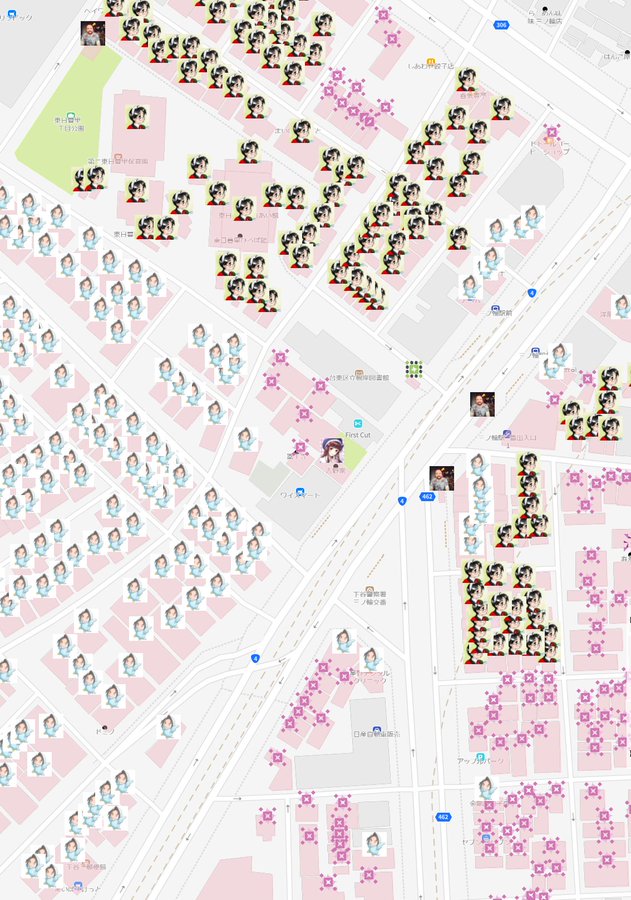2022/03/01-2022/03/07

建物の編集者 [1] © yuiseki | map data © OpenStreetMap contributors
マッピングキャンペーン
- スイスの月次マッピング活動の成果がダッシュボードでまとめられています。
- Xexéu市(ブラジル)でタスキングマネージャを使ったマッパソンが開催され、マッピング率100%を達成したことをRaphaelmirc氏が報告しています。
マッピング
- Enock Seth氏は、ガーナのMaxar衛星画像が更新されたことを国内マッパーに向けてアナウンスしています。
- ドイツ語フォーラムで、軍事目標になりえる施設のOSMデータが大規模に削除されていることが報告されました。これはOSMコミュニティの目的に反する破壊行為であり、データワーキンググループの判断を待たずにリバートすべきであるとの合意に達しました。
- 鉄道の信号機の高さを
railway:signal:height=*でタグ付けする提案をDakon氏が作成しました。
コミュニティ
- OSMF役員であるAmanda McCann氏が、1月に実施した活動をまとめました。Nominatimへの貢献や、OSMFでの商標対応などに取り組んでいます。
- YouthMapersグアテマラ支部が、3月5日にOSM入門講座を開催しました。
- OSMベルギーの「今月のマッパー」にSøren Johannessenが選出され、インタビュー記事が掲載されました。Johannessen氏はデンマークで自転車インフラのマッピングやOSMワークショップなどに取り組んでいます。
- 2月26日にラテンアメリカコミュニティで、OSMメモの解決を進めるノータソンが開催されました。Mapeadora氏は参加した感想をまとめています。
地方支部ニュース
- OSM米国はニュースレター3月号を発行しました。新役員メンバーの紹介や、公園マッピングイベントなどが掲載されています。
イベント
- 国際女性デーを記念して、GeoChicasとYouthMappersは3月3日にオンラインワークショップを開催し、「女性ストリート」プロジェクトの支援活動を行いました。
- Trufi協会と交通開発政策機関ITDPは、自転車向けオープンデータに関するウェビナーを3月22日に開催します。
教育
- Anne-Karoline Distel氏は、OSMデータから3Dモデルがどのように作成されるかを示す Derrynaflan Trail 12 のビデオをYouTubeに投稿しました。
OSM人道支援
- UN Department of Operational SupportのGISコンサルタントであるMichael Montani氏は、HOTディスカッションリストで、ソマリアのUNSOS平和維持部隊がどのようにOSMデータを利用して介入を支援しており、UNSOSが監視するセキュリティ上の問題がある地域で、HOT Taskingマネージャーに配置されたいくつかのマッピングプロジェクトからの質の問題に対する懸念について説明しています。
UNMapperのAlessandroはすでに2ヶ月前に、これらの質の問題に対する不満を表明していました(私たちはIssue#599で報告しました)。彼は新しいブログで、OSMF Dataワーキンググループからの最終的な介入を示唆するコメントのきっかけとなったと報告しています。 - bo_hotはHOT技術チームの新しいメンバーを紹介しました。
ソフトウェア
ご存知でしたか?
- … Hans Hackのさまざまな Geotoolsをご存知ですか? “Reprojector”、 “How Big”、 “Gimme Geodata”、”Radius” があります。
- … LeafletJSは、11年前にウクライナで生まれた インタラクティブマップ用のオープンソースのJavaScriptライブラリで、モバイルにも対応できます。
- …openSenseMap、センサーデータが公開された地図? senseBoxは、学生や関心のある市民に、測定データを収集して公開するOSMプラットフォームを提供します。
メディア掲載
- ニュースメディアのThe Registerは、StreetCompleteアプリが寄付リンクを持っているためにGoogle Play Storeから拒否されたと伝えています。
- OSMファウンデーションの理事長は、NY Timesの出版物と比較するために、30分でKharkiv (ハルキウ)の地図を作成しました。その結果:「New York TimesはOpenStreetMapを使用していないが、質の低いおそらく商業的な情報源である。そうでなければ、彼らの地図の方が優れているはずだ」。
その他の “ジオ” な事柄
- Mateusz FafinskiはTwitterのスレッドで、ロシアのウクライナ侵攻についての地図作成での選択が、我々の認識にどのように影響するかを示しました。
- ジェフリー・ルイス博士はツイッターで、交通情報が軍の動きを追跡するためにどのように利用されるかを、公式発表の数時間前に示しています。Googleはこれに反応し、ウクライナのトラフィックレイヤを 無効にしました 。
- ドイツの高速道路のWebカメラはオフラインです。これによってオープンソースインテリジェンスが制限されるのではないかと推測する人もいます(Twitterより)。
- UK Health and Safety Executiveは、リスク評価を支援するために、細分化された人口推計のデータベースである National Population Database (NPD) を作成しました。South Manchesterの一部をカバーするデータベースの小規模なサンプルは、インタラクティブな使用のためにオンラインで利用できます。利用可能なデータのタイプ(学校の登録、病院のベッド、スタディアの容量など)は、OSMマッパーにとって重要な場合があります。
まもなく開催
‘
Note: ここであなたのイベントを見たい場合は、カレンダーにそれを OSM Kalender 入れてください。そこにあるデータのみが、週刊 OSM に表示されます。 カレンダー 内で都市や国に言及するのを忘れないでください。
This weeklyOSM was produced by MatthiasMatthias, Nakaner, Strubbl, TheSwavu, YoViajo, derFred, miurahr, muramototomoya.